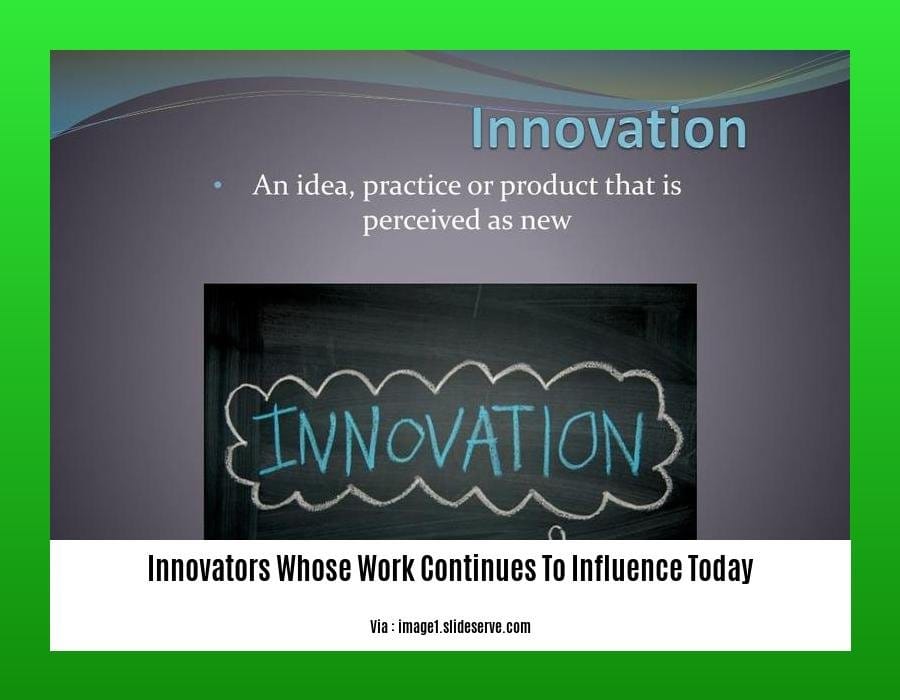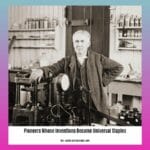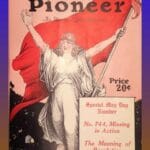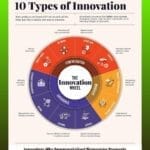The legacy of innovation lives on through the groundbreaking work of visionaries like Johannes Gutenberg, Marie Curie, Wan-Hu Graham, and Alexander Bell. From the printing press to the discovery of radium and the invention of the telephone, their contributions have shaped the world we live in and continue to inspire countless minds today. As we delve into their extraordinary journeys in [Innovators Whose Work Continues to Influence Today], we uncover the enduring impact of their ingenuity and the ways in which their ideas continue to shape our technological landscape.
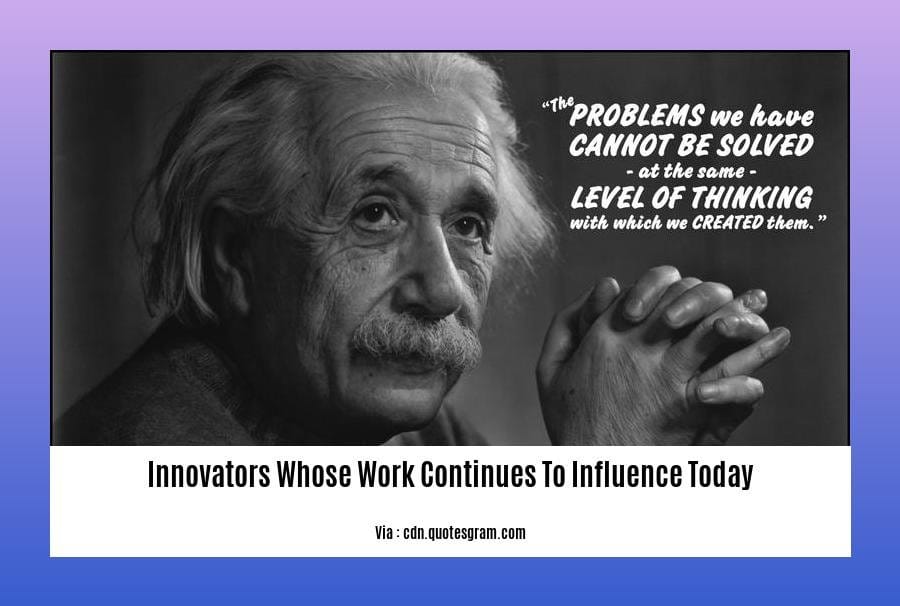
Key Takeaways:
- Innovation thrived despite challenges in 2020, with advancements in vaccines, streaming, and spaceflight.
- Home environments gained importance for well-being during the pandemic.
- Rising innovators included Samantha Pratt (advocacy), Anitra Belle Henderson (history), and Barron Ryan (storytelling).
- InnoLead recognized 25 influential innovators, including mRNA vaccine and streaming leaders.
- Newsweek’s “50 Greatest Disruptors” list highlights visionaries using technology to transform society.
Innovators Whose Work Continues to Influence Today
Despite the challenges of 2020, innovation thrived as forward-looking companies invested heavily in breakthroughs that transformed our world. The pandemic highlighted the importance of home environments, leading to surges in streaming services and the recognition of innovators like Samantha Pratt and Anitra Belle Henderson.
The pandemic highlighted the importance of home environments, leading to surges in streaming services and the recognition of innovators like Samantha Pratt and Anitra Belle Henderson. InnoLead recognized the top 25 most influential innovators whose work continues to influence today, including leaders in mRNA vaccines and streaming services. Newsweek’s “50 Greatest Disruptors” list showcases visionaries transforming the world through technology.
These innovators whose work continues to influence today share a common trait: they recognized unmet needs and developed creative solutions that have had a lasting impact. Their work has shaped industries, inspired generations, and laid the foundation for the technological landscape we experience today. As we navigate an uncertain future, the legacy of these visionaries will continue to guide and inspire us.
Meet the pioneers whose breakthroughs endure generations later and learn about their groundbreaking contributions, as well as the pioneering innovations that remain relevant today. Discover the stories of pivotal pioneers whose work shaped the future.
Wan-Hu: Legendary Trailblazer of Space Exploration
Wan-Hu, a legendary Chinese figure, is shrouded in mystery and myth. The tale of his daring ascent into space, propelled by 47 rockets strapped to a chair, has captured the imagination of generations. While the veracity of the legend remains debated, its enduring legacy as the first “astronaut” highlights the boundless human spirit of exploration.
Key Takeaways:
- Legend of a Trailblazer: Wan-Hu is believed to have conducted the world’s first space flight, using rockets and kites in 2000 BCE.
- Varied Narratives: The story exists in various versions, including one where Wan-Hu’s rockets exploded, resulting in his demise.
- Historical Context: The legend predates written records and the development of gunpowder-based rockets, casting doubt on its historical accuracy.
- Cultural Influence: The Wan-Hu tale has been featured in books, popular culture, and the naming of a crater on the Moon.
Citation:
- NASA:
Graham Alexander Bell
Paramount Accomplishments
- Inventor of the telephone
- Refinement of the phonograph
- Researched light’s use for sound transmission
- Developed a metal detector
- Pioneered heavier-than-air flight
Hallmark Inventions
- Telephone (1876): Revolutionized communication, connecting people instantly over distance.
- Phonograph (1886): Enabled recording and playback of sound, paving the way for music and audio entertainment.
Innovations Inspired by Personal Experience
Graham Alexander Bell’s passion for sound technology stemmed from his deaf mother and wife. His personal experiences fueled his determination to develop devices that aided communication and accessibility for the deaf community.
Key Takeaways:
- Innovation can be driven by personal motivations and empathy.
- Technological advancements often stem from addressing societal needs.
- The pursuit of knowledge and the desire to solve problems are key drivers of innovation.
Citation:
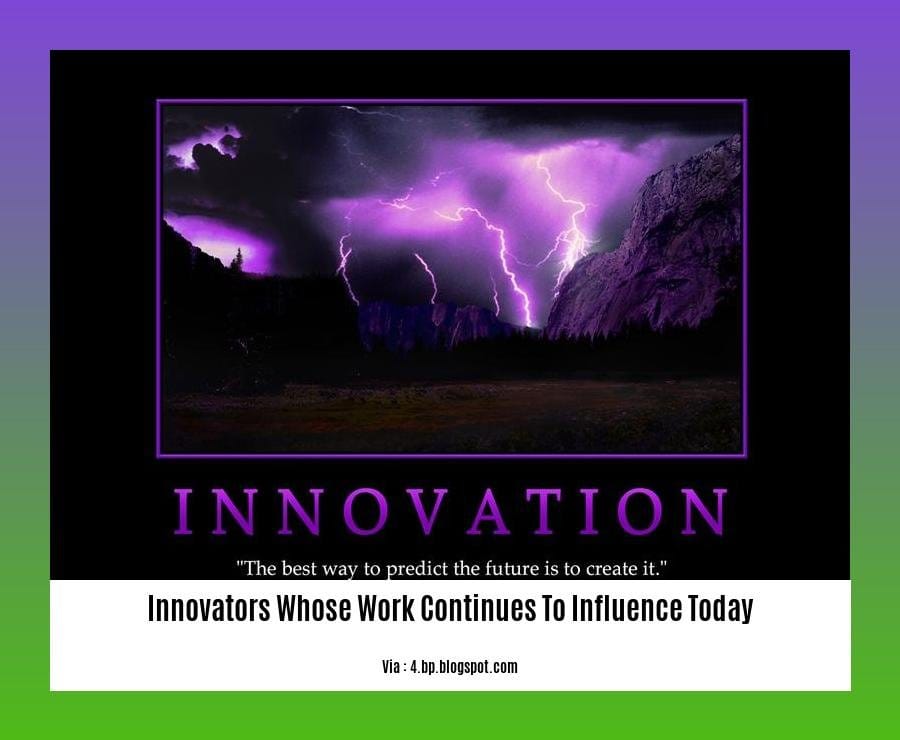
FAQ
Q1: Who is credited as the world’s first “astronaut”?
A1: According to a legend, Wan Hu, a legendary Chinese official, is believed to be the first astronaut.
Q2: What was Alexander Graham Bell’s groundbreaking invention?
A2: Alexander Graham Bell is renowned for inventing the telephone in 1876.
Q3: What is the significance of the crater Wan-Hoo?
A3: The crater Wan-Hoo on the far side of the Moon is named after the legendary Chinese astronaut, Wan Hu.
Q4: What personal connection did Alexander Graham Bell have to sound technology?
A4: Bell’s wife and mother were both deaf, which influenced his keen interest in sound technology.
Q5: Is the legend of Wan Hu historically accurate?
A5: The legend of Wan Hu is considered semi-legendary and lacks substantial documentation to support its historical accuracy.
